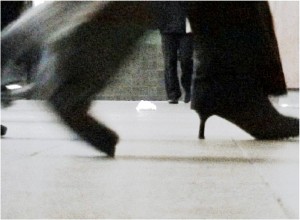ACTSA Mendips Walk
I was very pleased to go for a walk across the Medips with ACTSA and some of the Know Your Bristol on the Move team on Sunday, 15 June. This annual walk, 6 miles from Priddy and across cow-and-barley filled fields and through Ebbor Gorge, is one of the ways in which the anti-apartheid movement has traveled across the UK and is inscribed across the land. This walk apparently began in Southampton before coming to Bristol and then out to the Mendips. It’s a key event for the group and involves catching up on one another’s lives, enjoying the landscape and watching one another’s children grow.
For me, coming out of a background in Archaeology and then work in Performance Studies, it’s no surprise that this walking practice generates new forms of sociability and politics. It marks the anti-apartheid movement on the bodies of the group and onto the land. It’s also no surprise that joining the group on the walk creates new understandings of its histories for the Know your Bristol on the Move team. But for many arts and humanities disciplines, this kind of ‘experiential learning’ is not traditionally valued. Learning by doing has roots in John Dewey‘s work in the late nineteenth and early twentieth centuries. At the same time, the relationship between practices of the body and ideas of knowledge and regulation can be found in Michel Foucault‘s writings. And more recently, American philosopher, Judith Butler – a key writer on ‘performativity’, that is, on the ways in which bodies, institutions, communities, materials are always in a process of becoming rather than being fixed identities – has written about the importance of performance and the body in political action.
In the context of my work on this project, which is to reflect on and coordinate our thinking about what a community ‘toolkit’ for co-production might look like, I think it’s important both to recognise the emotional, aesthetic and political power in acts of walking and to highlight some of the significant scholarship in this field. Back in 2006-08, I ran an AHRC project on the idea of ’empty’ landscapes, which had as its central research mode a series of site-based workshops that were characterised by walking and talking. Both Tim Cole and Josie McClellan were involved in that project and its subsequent iterations at the university and the project’s final report spoke of the importance of walking as a grounded practice that can generate new ways of thinking about place. Elsewhere, the Talking Walking website collects artists’ reflections on walking. Geographers John Wylie and Hayden Lorimer have walking and running at the heart of their research. Performance scholars Dee Heddon and Misha Myers are key thinkers on the role of walking and research and they’re developing a walking library. Walking is one of the primary practices of the archaeologist, too. The poetics of walking can be found in the Romantic period, but even earlier, in the writings of William Gilpin, who emphasised the importance of moving through the landscape (specifically, the River Wye) in order to understand and depict landscape. Recent writing by people like Rebecca Solnit (Wanderlust), W G Sebald (The Rings of Saturn) and Robert Macfarlane (The Old Ways: A Journey on Foot) all celebrate walking. And if I do an internet search for <community walking performance knowledge> I get 68m results.
Our project connects with the wide context of walking across academic disciplines, arts practices and community. While we may not have discovered anything new, the power of perambulation is new to some areas of the arts and humanities and does enrich academic practice. Importantly, it demands that academics think about their responsibilities to the people they seek to engage with and reminds researchers that histories are about lived experiences, small acts and experiments in rubbing along together.
